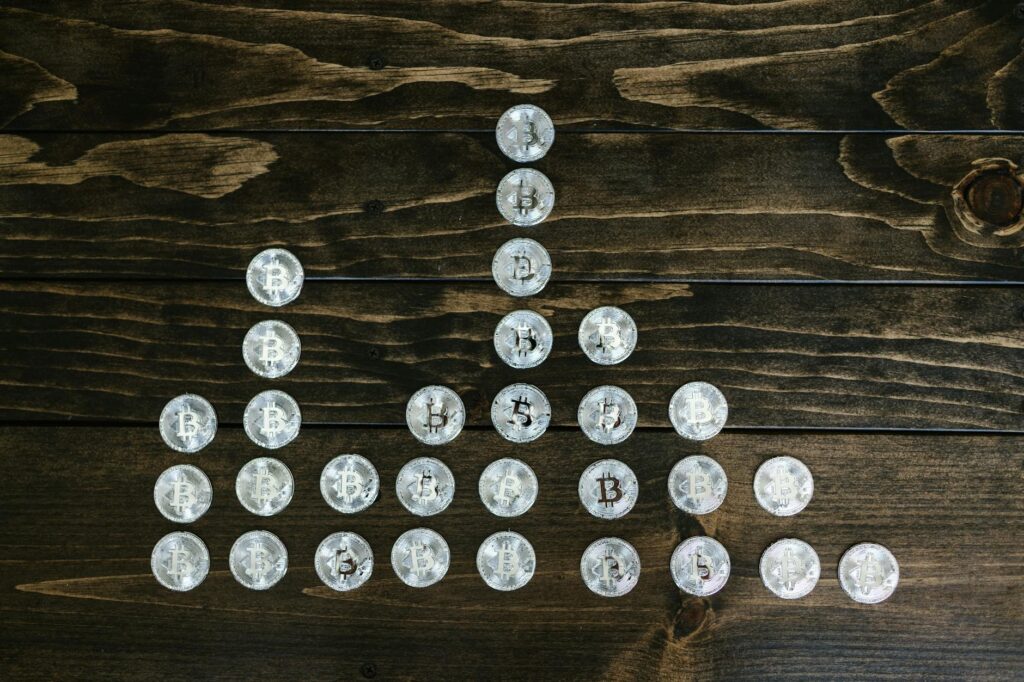The Unseen Engine: How Money and Self-Interest Forge Unbreakable Blockchains
Ever wonder what actually keeps massive, decentralized networks like Bitcoin and Ethereum from imploding into chaos? There’s no CEO, no central server, no IT department to call when things go wrong. So, what’s the secret sauce? It’s not just brilliant code or complex cryptography. At its core, the security of these billion-dollar networks boils down to a beautifully simple, and profoundly human, concept: economic incentives. It’s a system designed so that everyone acting in their own self-interest collectively creates a fortress of security. It’s a delicate, high-stakes dance of carrots and sticks, where honesty is not just the best policy—it’s the most profitable one.
Key Takeaways
- Self-Interest as Security: Bitcoin and Ethereum’s security models don’t rely on altruism. They cleverly align the financial self-interest of participants (miners and validators) with the overall health and security of the network.
- Proof-of-Work (Bitcoin): Security is achieved through massive energy and computational expenditure. Miners are incentivized by block rewards (new BTC) and transaction fees, making it prohibitively expensive for a single entity to attack the network.
- Proof-of-Stake (Ethereum): Security is based on capital. Validators lock up (stake) their ETH as collateral. They are rewarded for honest behavior but risk losing their stake (‘slashing’) if they act maliciously.
- The Cost of Attack: In both systems, the economic model ensures that it is far more profitable to participate honestly and earn rewards than it is to spend the immense resources required to mount a successful attack.
The Great Decentralization Problem: Who Guards the Guards?
Before we dive into the nuts and bolts, let’s appreciate the problem these incentives solve. Imagine a shared digital ledger, a global spreadsheet that anyone can see. How do you decide who gets to write the next line? How do you stop someone from writing “Alice pays Bob 1 million dollars” when Alice never agreed to it? In a traditional system, a bank or a company acts as the trusted middleman. They verify transactions, maintain the ledger, and provide security. They are the central authority.
But Bitcoin and Ethereum were built to eliminate that need for a central authority. They are “trustless,” which doesn’t mean you can’t trust them. It means you don’t *have to*. The system is designed to function reliably even if all participants are strangers who don’t trust each other. This is a monumental challenge. To achieve it, the creators of these networks turned to game theory and economics. They had to design a system where the most rational, profit-seeking action for any individual is to play by the rules. Let’s see how they did it.

Bitcoin’s Proof-of-Work (PoW): Security Through Brute Force and Big Rewards
Bitcoin, the OG cryptocurrency, uses a system called Proof-of-Work (PoW). Think of it as a massive, continuous, global competition. The participants in this competition are called “miners.”
The Carrot: Block Rewards and Transaction Fees
So, why would anyone spend a fortune on specialized computers (ASICs) and electricity to participate in this competition? Two words: free money.
The competition involves miners using their computational power to solve an incredibly difficult mathematical puzzle. It’s essentially a guessing game on a cosmic scale. The first miner to find the correct answer gets the right to add the next “block” of transactions to the Bitcoin blockchain. And for their trouble? They receive a reward.
This reward comes in two forms:
- The Block Reward (or Subsidy): This is a predetermined amount of brand-new bitcoin, created out of thin air. When Bitcoin started, this was 50 BTC per block. This amount gets cut in half roughly every four years in an event called “the halving.” As of now, it’s 3.125 BTC. This predictable, decreasing supply is what makes Bitcoin a scarce digital asset, much like gold. It’s the primary incentive that has fueled the growth of the entire mining industry.
- Transaction Fees: Every time you send bitcoin, you attach a small fee. These fees go to the miner who successfully adds your transaction’s block to the chain. While currently smaller than the block reward, these fees will become the primary incentive for miners in the distant future when the last bitcoin has been mined (around the year 2140).
This two-pronged reward system creates a powerful incentive for miners to participate. They invest millions in hardware and operational costs, all driven by the potential to earn these lucrative rewards. The more miners that join the network, the more computational power (or “hash rate”) is dedicated to it, and the more secure the network becomes.
The Stick: The Prohibitive Cost of Attack
Okay, so honesty is profitable. But what stops a wealthy, malicious actor from trying to cheat? What if someone wanted to spend a bunch of their bitcoin and then try to reverse the transaction—a “double-spend” attack?
To do this, they would need to control more than half of the network’s entire computational power. This is the infamous 51% attack. With that much power, they could theoretically create their own version of the blockchain faster than the honest miners, and get the rest of the network to accept it as the truth.
Here’s where the economic incentives flip from a carrot to a giant, electrified stick. The cost to acquire enough specialized hardware and electricity to achieve 51% of Bitcoin’s hash rate is astronomical, easily running into the billions of dollars. It’s a staggering upfront investment.
But let’s say a Bond villain actually pulls it off. What happens next? The moment the world realizes the network has been successfully attacked, confidence would plummet. The price of Bitcoin would crash. So, our villain, who just spent billions to execute the attack, would see the value of any bitcoin they might have stolen (or their own holdings) evaporate. The very act of succeeding in the attack destroys the value of the prize.
It’s a beautiful checkmate. It is far, far more profitable to use that immense computational power to mine honestly and collect the block rewards than it is to attack the network and destroy your own investment. The system secures itself by making attacks economically irrational.
Ethereum’s Proof-of-Stake (PoS): A Capital-Based Approach
For years, Ethereum also used Proof-of-Work. But it was always part of the plan to switch to a different, more energy-efficient model called Proof-of-Stake (PoS). This historic transition, known as “The Merge,” happened in September 2022.
In PoS, the brute-force computational race is replaced by a system where security is based on capital. Instead of “miners,” we have “validators.” And instead of contributing hash power, they contribute their own money.
The Validator’s Wager: Staking and Rewards
To become a validator on the Ethereum network, a user must deposit—or “stake”—32 ETH into a smart contract. This is like posting a security bond. It’s a direct, financial commitment to the network’s health. In return for this service, validators are chosen at random to create new blocks and validate transactions. When they perform their duties correctly, they earn rewards.
These rewards are a combination of:
- Issuance Rewards: A small amount of new ETH is created and distributed to active validators. This is analogous to Bitcoin’s block reward, but the issuance rate is much lower, making ETH a less inflationary asset post-Merge.
- Transaction Fees (or “Tips”): Just like in Bitcoin, users pay fees to have their transactions prioritized. In Ethereum, these tips go directly to the validator who includes their transaction in a block.
This model drastically reduces the network’s energy consumption (by over 99.9%) because there’s no need for a power-hungry computational race. The security isn’t based on who can burn the most electricity, but on who has the most skin in the game. You’re putting your own capital on the line to vouch for the integrity of the network.

Slashing: The Ultimate Financial Penalty
So what’s the “stick” in Ethereum’s PoS system? What stops a validator from trying to approve fraudulent transactions or attack the network?
The answer is slashing.
If a validator misbehaves—for example, by trying to validate two different blocks at the same time or going offline for too long—the network can automatically destroy a portion of their staked 32 ETH. It’s a direct, painful financial penalty. If they attempt a serious, coordinated attack, their entire stake can be slashed and they are forcibly ejected from the network.
Think about it. In PoW, an attacker’s mining hardware still exists after a failed attack. They can sell it or point it to another chain. In PoS, the capital used for the attack (the staked ETH) is literally burned from existence. This makes a direct attack on Ethereum incredibly and irrevocably costly.
Just like with Bitcoin, a 51% attack is theoretically possible. An attacker would need to control 51% of all staked ETH. This would require acquiring tens of billions of dollars worth of ETH, which would itself drive the price up astronomically, making the acquisition even more expensive. And if they were to succeed, their slashed stake would be worth billions of dollars, a loss from which they could not recover. The economic disincentive is immense and arguably even more direct than in PoW.
The fundamental shift is from security based on energy expenditure (PoW) to security based on capital at risk (PoS). Bitcoin says, “Show me how much energy you can burn.” Ethereum says, “Show me how much money you’re willing to lose.”
The Unseen Hand: How These Economic Incentives Shape Everything
These security models aren’t just technical details; they have profound consequences for the entire ecosystem. The economic incentives of Proof-of-Work led to the creation of a multi-billion dollar mining industry, driving innovation in semiconductor chips and energy solutions. It encourages miners to seek out the cheapest sources of energy globally, which has both positive and negative environmental implications.
Ethereum’s move to Proof-of-Stake has created a new kind of economy around staking. It allows any ETH holder, even those without 32 ETH, to participate in securing the network through liquid staking pools like Lido or Rocket Pool. This creates a native “interest rate” for Ethereum, turning it into a productive capital asset. The decision to dramatically reduce ETH issuance after The Merge was an economic choice designed to make the asset more scarce and valuable, thereby increasing the value of the capital securing the network.
Both systems are a constant balancing act. The fees must be high enough to incentivize security but not so high that they deter users. The rewards must be attractive enough to encourage participation but not so inflationary that they devalue the asset. It’s a complex, self-regulating economic machine running on a global scale.
Conclusion
When you strip away the jargon, the security of Bitcoin and Ethereum is a masterclass in human psychology and economics. It’s a system that acknowledges greed and self-interest not as flaws to be eliminated, but as powerful forces to be harnessed. By making honesty the most profitable strategy and malicious behavior a path to financial ruin, these networks create an environment of trust without relying on a single trusted entity. They are living proof that with the right set of economic incentives, you can build a decentralized, secure, and resilient system that can coordinate millions of people around the world. And that is, without a doubt, one of the most revolutionary ideas of our time.


